The drag curl is a unique bicep curl variation in which you don’t completely bring the weight in front of your body. Bodybuilders perform it to improve the size and appearance of their biceps. It primarily targets the long head of the biceps brachii.
Unlike a conventional bicep curl, in which the elbows are relatively fixed (or may even drift slightly forward), the Drag Curl actively pulls the elbows back as you lift the weight. The weight literally “drag” up the line of your torso.
The dragging motion eliminates the ability to use momentum or “swing” the weight up, forcing pure muscular contraction.
This posterior elbow displacement significantly reduces the involvement of the anterior deltoid. Why? Because the anterior deltoid is a shoulder flexor. Moving into shoulder extension means moving away from its primary function.
Restricting shoulder flexion causes the biceps to contract more extensively and intensely, resulting in a very strong peak contraction.
When I first heard about the Drag Curl, I wasn’t sure how well it would work. However, after adding drag curls to my workout routine, I saw a big difference in the size of my biceps within 8 weeks.
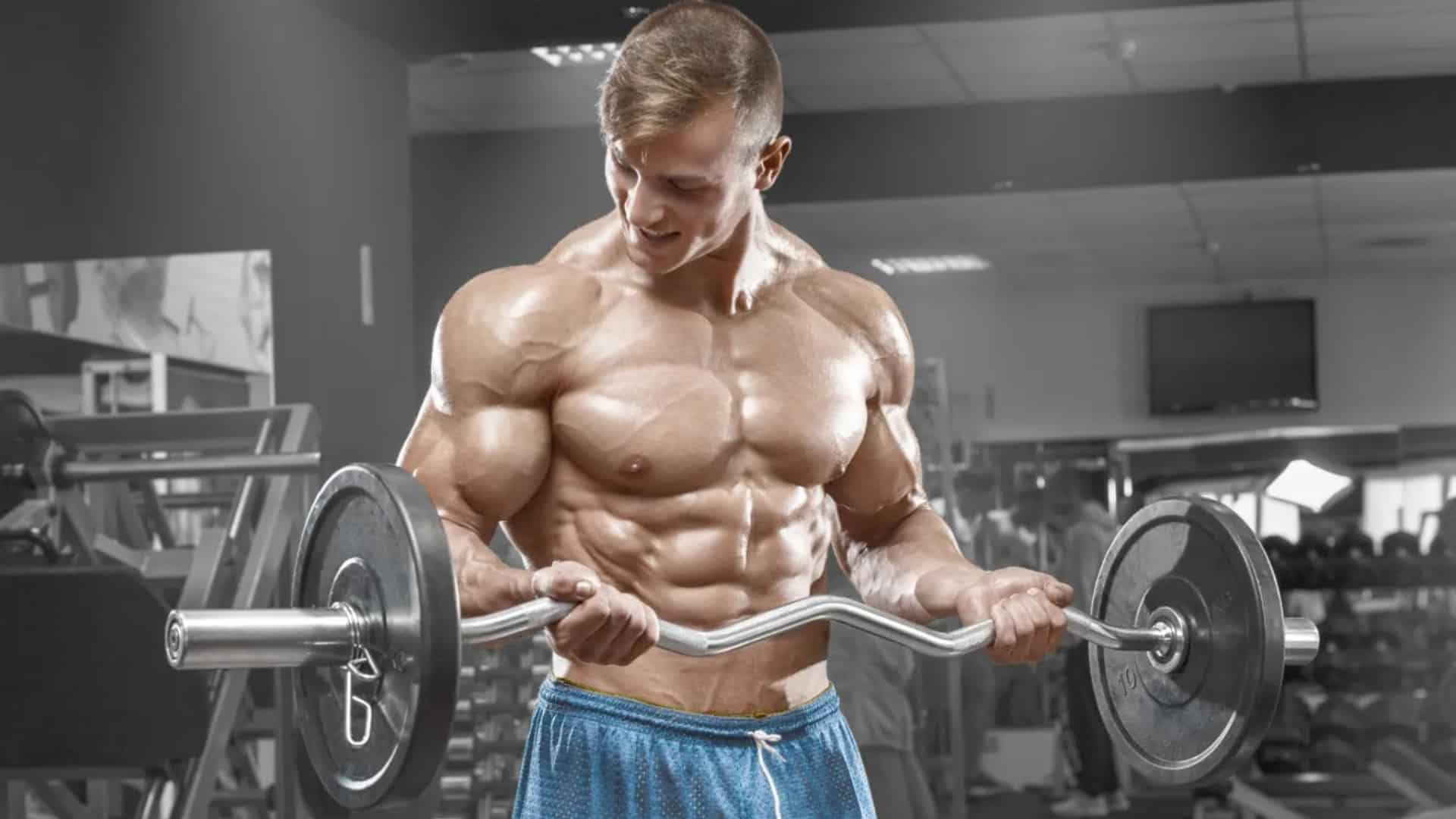
- Drag Curl Muscles Worked
- Dumbbell Drag Curl
- How To Do
- Barbell Drag Curl
- How To Do
- Cable Drag Curl
- How To Do
- Seated Dumbbell Drag Curl
- How To Do
- Tips And Techniques
- FAQs
- Drag curls vs bicep curls
- Can drag curls be performed with dumbbells?
- Are drag curls better than traditional bicep curls?
- Do drag curls, work the long head
- References
Drag Curl Muscles Worked
- Primary Muscle: Biceps Brachii (both long and short heads)
- Secondary Muscles: Brachialis, Brachioradialis and Forearm flexors
- Stabilizing Muscles: Deltoids (posterior), Trapezius, Rhomboids and Core (rectus abdominis, obliques, erector spinae)
The drag curls primarily activate both heads of the biceps. It focuses on the “peak” or long head of the biceps.
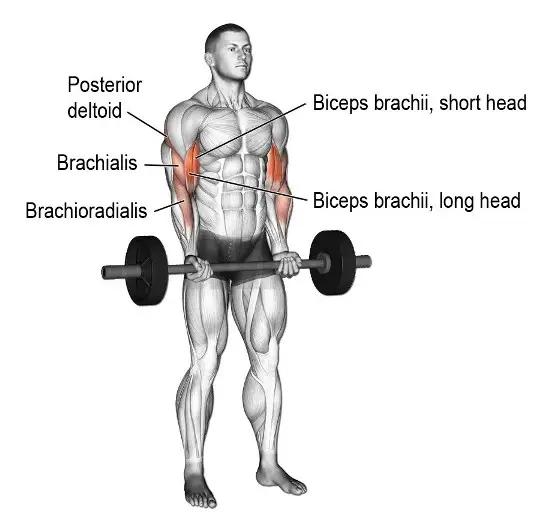
Dumbbell Drag Curl
Since dumbbell drag curls let you work each arm separately, they are a great way to find and fix muscle imbalances on the left and right sides.
A bar doesn’t lock your wrists, elbows, and shoulders into a fixed position. This allows each arm to find its most natural and comfortable “drag” path, which can reduce strain on the joints, particularly the wrists and elbows.
While standard drag curls are supinated (palms up), dumbbells technically allow for slight variations. You could also perform a drag curl using a neutral grip (hammer style), emphasising the brachialis and brachioradialis more.
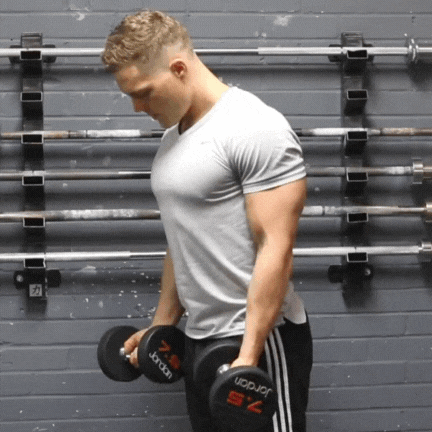
How To Do
- Stand tall with your chest up and shoulders pulled back and down. For stability, maintain a slight bend in your knees.
- Hold a dumbbell in each hand with an underhand (supinated) grip. Let your arms hang straight down, with the dumbbells resting against the front of your thighs or slightly to the sides.
- Start the movement by flexing your elbows (bending your arms) and simultaneously pulling your elbows backwards.
- Continue curling until the dumbbells are near your lower chest/upper abdomen and you feel a strong peak contraction in your biceps.
- Slowly lower the dumbbells to the starting position, keeping your elbows slightly back to maintain the “drag.”
- Exhale as you curl the weight up (during the concentric phase). Inhale as you lower the weight (during the eccentric phase).
Barbell Drag Curl
If you want to improve your arm size, strength, and appearance, the barbell drag curl is for you.
Barbell drag curls work both biceps at once. You can generally lift more absolute weight with a barbell than with two separate dumbbells (due to bilateral facilitation and reduced stabilisation demands per limb).
When I do the barbell drag curl, I get a very intense squeeze at the top. The combination of the effort and the bar’s position almost makes my biceps contract.
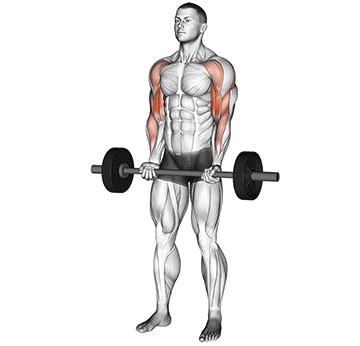
How To Do
- Grab the barbell with a supinated grip and keep your hands slightly wider than shoulder-width apart.
- Hold the barbell close to your body, with your arms extended and the bar touching your thighs.
- Keeping your elbows close to your sides, slowly drag the bar up.
- Keep raising the bar as high as possible without letting your elbows move forward.
- You should squeeze your biceps hard at the top.
- Slowly return to the starting position.
Cable Drag Curl
The cable provides continuous tension on the biceps throughout the entire range of motion. This isolation of the biceps through a partial range of motion builds stronger, bigger arms.
Cable handles (straight bar, ropes, etc.) can be used with different grips, like neutral and overhand grips. Using these grips can help reduce stress on your wrists compared to using dumbbells or barbells.
The cable setup allows you to fine-tune height and resistance to your comfort, unlike fixed-position barbells or dumbbells.
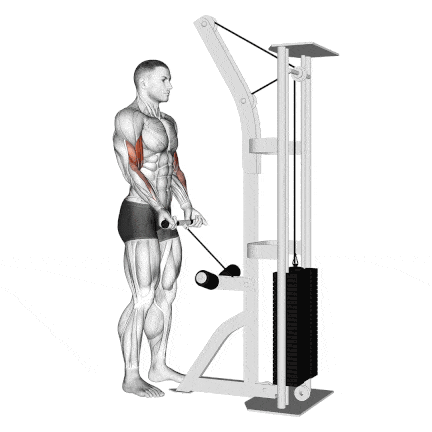
How To Do
- Attach a straight bar to the low pulley cable machine.
- Stand with your feet shoulder-width apart, your knees slightly bent.
- Grab the bar with an underhand (supinated) grip, with your hands slightly wider than shoulder-width apart.
- Bring your elbows and shoulders back slightly as you curl the bar upwards. It should feel like you are “dragging” the cable up to your body.
- Squeeze your biceps hard at the top and slowly return to the starting position.
Seated Dumbbell Drag Curl
The Seated Drag Curl is a biceps curl variation performed while sitting upright on a bench (without back support).
In contrast to the traditional drag curl, this exercise targets the biceps by removing momentum and increasing tension on the muscle.
For individuals who experience lower back discomfort or fatigue during standing bicep exercises (often due to unconscious leaning or stabilising), an upright seated position (especially with back support if available and used correctly) can alleviate this.
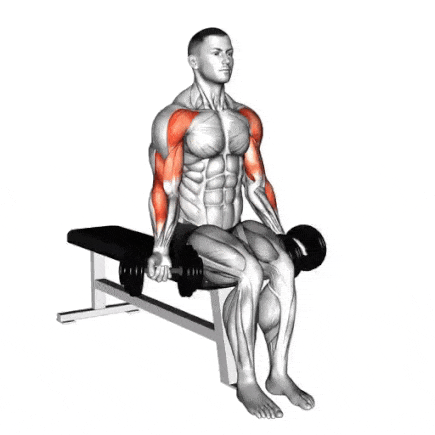
How To Do
- Sit on a bench with your feet flat on the floor and your back straight.
- Hold a dumbbell with an underhand grip and keep your elbows back and close to your body.
- Curl the dumbbell up towards your chest, squeezing your biceps at the top of the movement.
- Lower the dumbbell back down to the starting position.
Tips And Techniques
- Keep your elbows tight to your sides and high. Don’t let them flare out or move forward. The entire curl path should keep the dumbbells “glued” to your body.
- As you curl, think about pulling your elbows back rather than lifting with your hands or shoulders.
- Lock your shoulders down and back—avoid shrugging or rolling forward. The muscles of your upper back help stabilise the shoulder joint so that the arms can do the work.
- I have consistently observed that clients make more progress when they use weights that feel “too light” compared to their typical curling strength. So start with a lighter weight.
- Keep wrists neutral (in line with forearms) and grip tight to transfer force to the biceps.
- Especially for beginners, use a mirror or trainer’s feedback to ensure your elbow path is correct and your back stays neutral.
- Experiment with different grip variations (neutral or hammer) to see which targets your biceps best.
- Start with a lighter weight than you might use for regular dumbbell curls to master the form.
- Keep your back straight, your chest lifted, and your core engaged throughout the entire movement.
- Avoid rounding your back or hunching forward.
- Pay attention to the negative portion of the movement, slowly lowering the bar back down to the starting position.
- It is important to start with a lighter weight and gradually increase it as you become more comfortable with the movement.
FAQs
Drag curls vs bicep curls
Drag curls are a variation of bicep curls that involve keeping the elbows back and close to the body. They emphasise the biceps more and reduce the involvement of the shoulders and back muscles.
Traditional bicep curls involve lifting the weight straight up in front of the body.
Drag curls can be a useful addition to an arm workout routine for those looking to target the biceps differently.
Can drag curls be performed with dumbbells?
Yes, drag curls can be performed with dumbbells, barbells, and the Smith machine.
Using dumbbells can provide a greater range of motion.
Are drag curls better than traditional bicep curls?
Drag curls and traditional bicep curls are both effective exercises for targeting the biceps.
Drag curls are a great addition to your bicep workout routine, as they place greater emphasis on the biceps and forearm.
Do drag curls, work the long head
Drag curls work the long head of the biceps brachii muscles.
The drag curl exercise requires keeping the elbows back, which places greater emphasis on the long head.
References
- Marcolin G, Panizzolo FA, Petrone N, Moro T, Grigoletto D, Piccolo D, Paoli A. Differences in electromyographic activity of biceps brachii and brachioradialis while performing three variants of curl. PeerJ. 2018 Jul 13;6:e5165. doi: 10.7717/peerj.5165. PMID: 30013836; PMCID: PMC6047503.
- Nakazawa K, Kawakami Y, Fukunaga T, Yano H, Miyashita M. Differences in activation patterns in elbow flexor muscles during isometric, concentric and eccentric contractions. Eur J Appl Physiol Occup Physiol. 1993;66(3):214-20. doi: 10.1007/BF00235096. PMID: 8477676.
- Krzysztofik M, Wilk M, Wojdała G, Gołaś A. Maximizing Muscle Hypertrophy: A Systematic Review of Advanced Resistance Training Techniques and Methods. Int J Environ Res Public Health. 2019;16(24):4897. Published 2019 Dec 4. doi:10.3390/ijerph16244897

Manish is a NASM-certified fitness and nutrition coach with over 10 years of experience in weight lifting and fat loss fitness coaching. He specializes in gym-based training and has a lot of knowledge about exercise, lifting technique, biomechanics, and more.
Through “Fit Life Regime,” he generously shares the insights he’s gained over a decade in the field. His goal is to equip others with the knowledge to start their own fitness journey.
